Slithering Snake
| Tweet |
I have been very fortunate in my experiences as a vet. I have seen quite a wide range of cases that not many vets would have. I feel blessed and quite thankful for that. It has made me a much better and more well-rounded�vet. I am simply ready to tackle any species and am so keen to learn more and more each day! I personally enjoy knowing a little bit about everything instead of a lot about one thing because I can always build on my good foundation with more knowledge.
I can’t think of any species of animal that will send me running for the hills to hide.
I obviously have my preferences and strong suits. I am also very appreciative and absolutely respect veterinary specialists and am always trying to pick their brains about challenging cases.
Every vet has his/her niche and I think the best thing a young vet can ever do is to shadow a vet who has honed in on their niche. I feel like I have personally gained heaps of invaluable knowledge from working alongside amazing vets passionate about one specific species (equine, avian or etc) or domain (medicine, surgery or so forth).
I never thought I would be so fascinated with reptiles and more specifically snakes but as they say passion is contagious. Tim was a vet who absolutely loved his reptiles and he taught me so much about them and funnily enough I was suddenly more open and keen to learn about and treat reptiles!

I got to assist and watch Tim in action. He performed a few surgeries on native Australian snakes that where�kept in captivity.
They were species of snakes unique to Australia and in dwindling numbers.
From what I recall, these poor snakes were developing tumours that ultimately lead to their death. Soft tissue sarcoma, lymphoma, renal adenocarcinoma, fibrosarcoma, and melanoma are the most prevalent tumors in snakes.
I will briefly take you through what we did for one particular snake�that had developed� a very prominent lump. We premedicated�it with an intramuscular injection and had to wait some time for it to sedate. Reptiles take time to process drugs. We confirmed it was ready to go to the next step when we could flip it on its back and it was unable to flip back to its normal position. We then passed an endotracheal tube down its airway and had to tape it in position carefully to prevent damaging the snake’s very sharp yet delicate teeth.
I then discovered that snakes don’t have a diaphragm and we had to breathe for it during the whole anaesthetic; pretty interesting huh? Well I thought so. To make it even more interesting the lack of diaphragm meant that the snake’s heart could move around. Tim then allowed me to digitally locate and palpate�the snakes heart and apply a tape over�that location to make it easier for me to find and monitor the heart.
It was absolutely incredible because it felt like I was holding the snake’s heart in my very thumbs!
He then started the surgery and opened up the lump and discovered a fibrous tumour and he tried to resect�it to the best of his ability and sent off the samples for histopathology. He confirmed it was a fibrosarcoma. Patient was given palliative care.
On recovery, we warmed up the snake and maintained it on oxygen. It made an excellent recovery.
Unfortunately it presented to us again because the tumour had become more extensive. Tim did not give up and tried again to resect the very�invasive tumour and had to even take out a few affected ribs. Unfortunately it was very hard to determine the difference between normal and abnormal tissue and so that snake was bound to have a recurrence.
I feel privileged to have worked with Tim and will not be surprised to be consulting him about any snakes that come my way as he may well become an expert in this field.
While treating snakes may seem unfathomable to some of you, it is out there and I think it is great.
It is important to be able to conserve all species on this planet.
Unfortunately I do not recall what type of snake is in the pictures above and I apologise for that. I welcome anyone who knows to come forward.
Related articles
Hello Pet Lovers All Over The World (rayyathevet.com)
Filed under: Rare Cases, Reptiles Tagged: anaesthetic, avian, cool, diaphragm, endotracheal tube, equine, fibrosarcoma, fibrous tumor, histopathology, intramuscular injection, lymphoma, medicine, melanoma, native Australian snakes, Palliative care, pictures, premedicated, prominent lump, range of cases, renal adenocarcinoma, reptiles, sharp teeth, snake, Soft tissue sarcoma, surgery, tumour, tumours, veterinary specialists
Source: http://rayyathevet.com/2011/07/27/slithering-snake/
| Tweet |


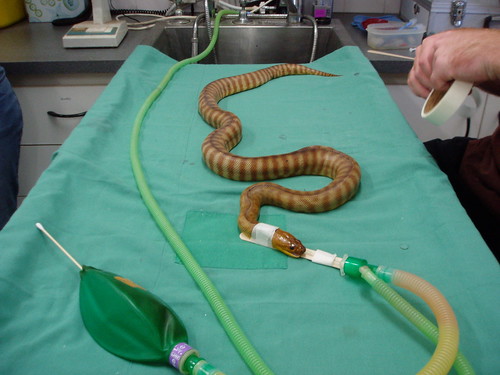
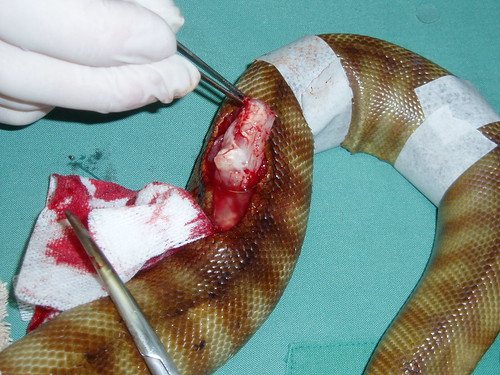
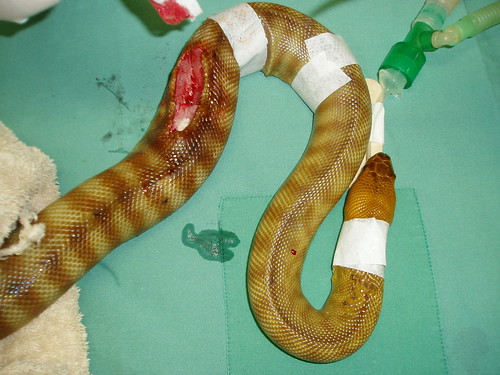
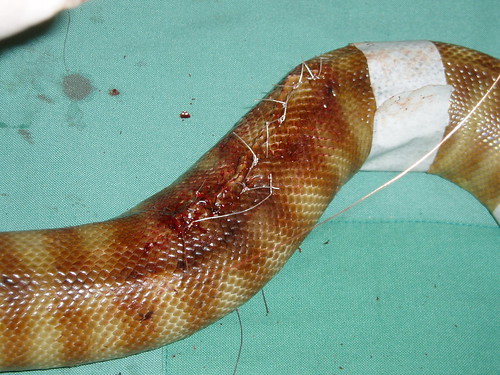
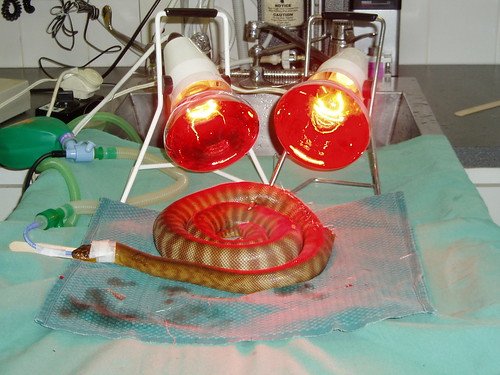
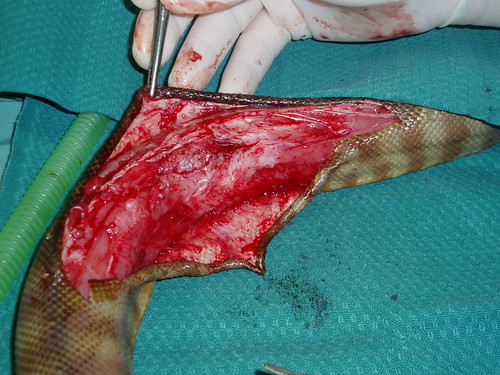
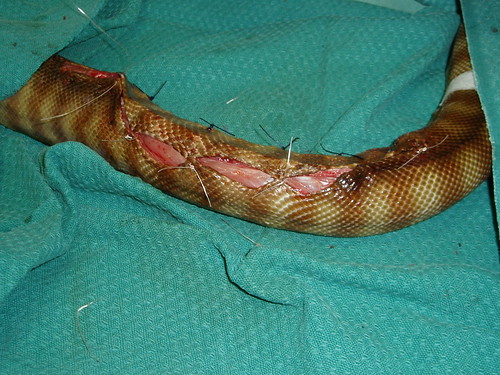
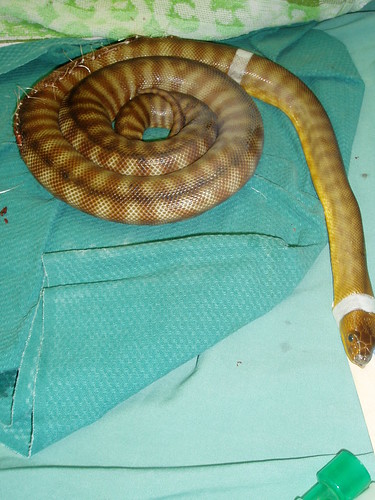
Facebook Comments